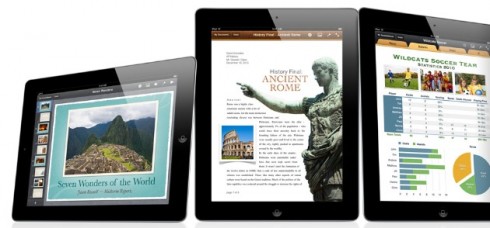TAKEAWAY: A new generation of “printnets” looming in the horizon. They go from print to tablet between bites of their Oreo cookies. Good news for all of us in the storytelling business!
The Three R’s and the T (as in tablet)

Oh, the discoveries one makes when spending an after-school afternoon with a group of grandkids aged 3 to 12!
Spending a few short days at home this week before taking off again, I had asked my daughters and daughters in law to please bring the kids in to my house for after school snacks. Something simple: I made a salad of mixed berries sprinkled with honey, got some ice cream cones, and, of course, the prerequisite box of Oreo cookies. Armed with several gallons of Gatorade in a variety of flavors, the kids were in heaven and we could do a variety of activities, with them taking off their shoes and running the length of the house, the musically oriented opening and “playing” my piano, etc.
But it was also “homework” time, and my daughters had made it clear that the kids had to do their readings, in addition to playing with Abo.
Out came real books out of their backpacks.
Danny, a first grader, sat down to read his Dinosaur book. Frankie took to my iPad and started reading a Thomas the Train book titled Mystic Island. The iPad went from one to the other, but so did the books. Yes, as in real books, the ones where you turn printed pages.
These kids were as comfortable——talk about “lean back”—-with printed books as with the iPad. Pages turned on paper. Pages turned on the screen.
And I was playing the observant grandfather here with a live laboratory of the readers of the future.
Four types of readers
In my presentations I often talk about four type of readers in today’s media landscape: Printnets, Digital Natives, Promiscuous Readers and Traditional Readers.
Printnets is a term I use to describe readers in their late 30s and 40s who appreciate print, saw their parents reading newspapers, magazines and books, and have an appreciation for print, but who are able to dive into anything digital. We like those readers and we hope they live for a long time.
What a surprise for me to see that the schools are cultivating these printnets in the next generation. This was excellent to witness in my own family room.
Tablets in the classroom
The iPad specifically is having a tremendous impact in US classrooms. From kindergarten to universities, the iPad is as popular as pencils and erasers used to be. And, although tablets are a new phenomenon, students of all ages have been using smartphones for years, and they are quite acquainted with touchscreen technology. In fact, my 3 year old grandson David is a master of touchscreen technology, and he does not discriminate to use his fingers on that screen even when they are coated with Oreo cookie icecream.
Because they’ve become so accustomed to using these devices, students are increasingly expecting to use them in the classroom setting. The good news is that apparently teachers are mixing the platforms: read a book in print, use the tablet to do your math, and so on. Good things happening here.
Of related interest
Apple iPad Awaits Back-To-School Boom
http://www.forbes.com/sites/jeffmcmahon/2011/07/22/apple-ipads-will-dominate-back-to-school-sales/
Math That Moves: Schools Embrace the iPad
http://www.nytimes.com/2011/01/05/education/05tablets.html?pagewanted=all
First paragraph: A growing number of schools across the nation are embracing the iPad as the latest tool to teach Kafka in multimedia, history through “Jeopardy”-like games and math with step-by-step animation of complex problems.
The Future of the Textbook
http://www.ipadinschools.com/
Highlight: We will ultimately see 3 dimensional content combined with 2 dimensional content and likely even holograms.